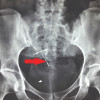
 IJCP Editorial Team
IJCP Editorial Team
Implication of the Novel Sildenafil Citrate Therapy on Fetal Growth Restriction and Oligohydramnios
Fetal growth restriction (FGR), oligohydramnios, and preeclampsia are significant contributors to both neonatal and maternal morbidity and mortality, occurring in 8-10% of pregnancies, with higher prevalence in primigravida. FGR primarily results from abnormal trophoblastic invasion, leading to inadequate uteroplacental circulation. Unfortunately, management options for these conditions are limited. However, using sildenafil citrate has shown promise by promoting vasodilation in small myometrial vessels and, potentially increasing amniotic fluid, fetal weight, and improving obstetric Doppler patterns.
A 32-year-old woman with secondary infertility of three years sought medical help due to difficulties conceiving. She had a history of two spontaneous miscarriages and dilatation and curettage.
Despite multiple ovulation induction cycles, transvaginal ultrasounds (TVUS) consistently showed a thin endometrium of 6-7 mm during ovulation. Routine investigations, including hysterosalpingogram and tuberculosis polymerase chain reaction (TB PCR), revealed no abnormalities. Hysteroscopy confirmed a normal uterine cavity.
Treatment was initiated with aspirin 75 mg, vitamin E, and pentoxifylline, but Doppler scans showed no improvement. In the subsequent cycle with ovulation induction and intrauterine insemination (IUI), luteal support included oral estrogen, progesterone, and vaginal sildenafil citrate 25 mg thrice a day due to reduced endometrial blood flow and thin endometrium.
A Doppler scan 7-8 days post-ovulation demonstrated improved endometrial blood flow, leading to successful conception in the same cycle.
However, during a 28-week ultrasound, oligohydramnios and FGR were observed – with a fetal weight below the fifth percentile. Umbilical artery Doppler scans showed a normal systolic/diastolic (S/D) ratio, pulsatility index, and resistive index, but notching was observed in the uterine artery Doppler study. Despite normal blood pressure and negative tests for preeclampsia, the prognosis for the pregnancy was questionable.
Owing to the challenging prognosis and the lack of established treatments, the couple was counseled regarding the experimental use of sildenafil citrate for oligohydramnios and FGR. Following detailed discussions, the couple opted for vaginal sildenafil citrate 25 mg thrice a day.
Ultrasounds after one week revealed improved blood flow, increased amniotic fluid index (AFI), and fetal weight. The umbilical artery diastolic flow also improved after two weeks of sildenafil citrate therapy. Further ultrasounds at 34 weeks showed an AFI of 8 and a fetal weight of 1,600 g, with the patient reporting increased perception of fetal movements.
The fetal well-being was monitored using biophysical profiles every two weeks. Sildenafil citrate therapy was discontinued at 36 weeks, and an elective cesarean section was performed at 37 weeks due to breech presentation, resulting in the birth of a healthy female child weighing 2.3 kg.
The placenta examination revealed areas of infarction, suggesting that sildenafil citrate may have improved Doppler parameters and blood flow patterns, potentially acting on vessels at the placental myometrial junction to prevent further deterioration.
Sildenafil citrate can positively impact uteroplacental waveforms in Doppler studies. It provides valuable in utero time, even in cases with absent end diastolic flow, helping reduce complications associated with extreme prematurity. Sildenafil should be considered in cases with abnormal color indices when genetic growth retardation or infection is not a contributing factor.
Source: Ganla K, Choudhary R, Gokani K. Indian Obstetrics & Gynaecology. 2023 Apr 1;13(2).

IJCP Editorial Team
Comprising seasoned professionals and experts from the medical field, the IJCP editorial team is dedicated to delivering timely and accurate content and thriving to provide attention-grabbing information for the readers. What sets them apart are their diverse expertise, spanning academia, research, and clinical practice, and their dedication to upholding the highest standards of quality and integrity. With a wealth of experience and a commitment to excellence, the IJCP editorial team strives to provide valuable perspectives, the latest trends, and in-depth analyses across various medical domains, all in a way that keeps you interested and engaged.












Please login to comment on this article